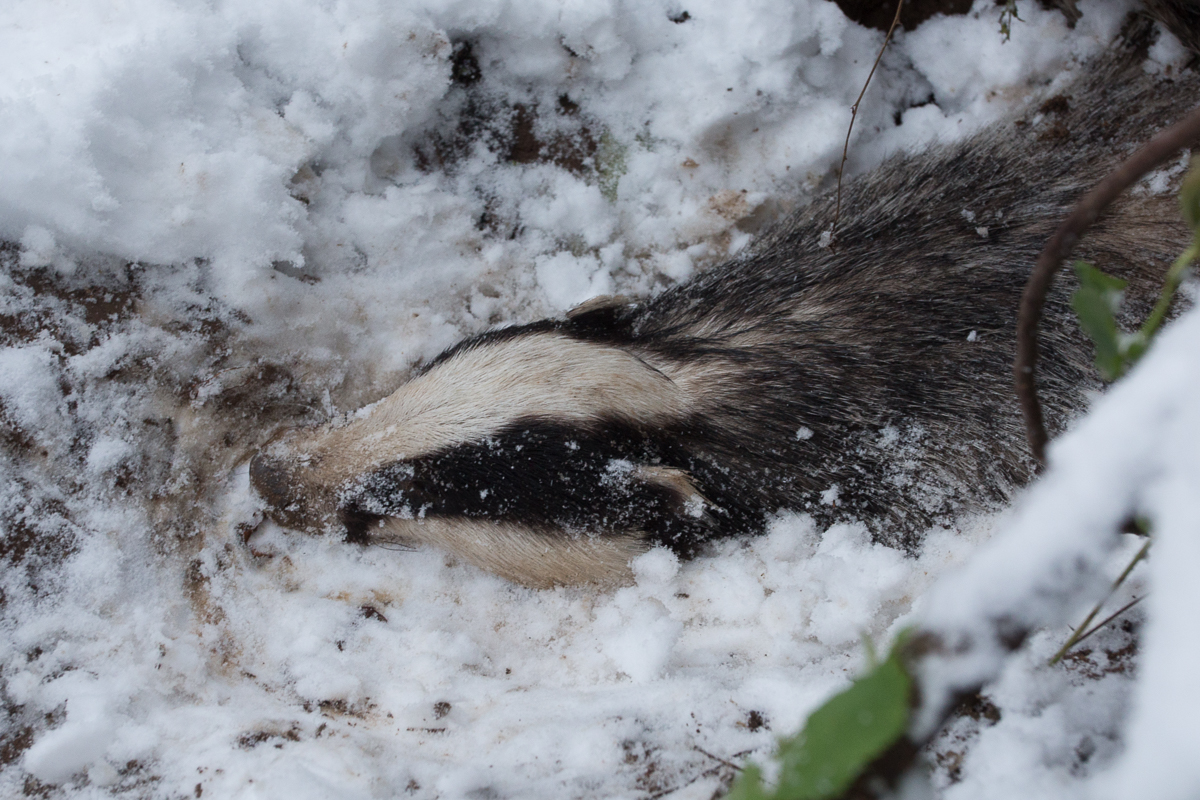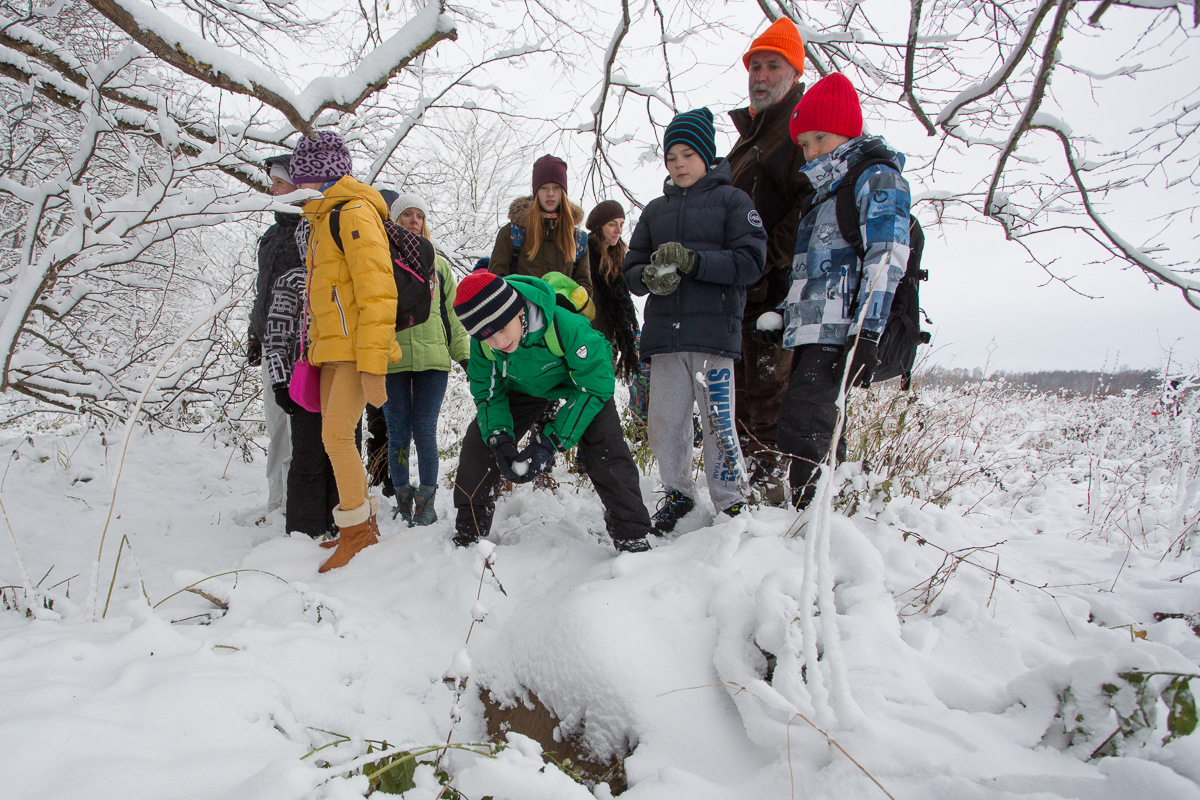

Posted by the Animal of the Year team, 04.11.2016
On the prize excursion to the powerful Soomaa badger sett for winning authors in the Animal of the Year badger writing competition, Rocca al Mare school pupil Mia Katrina suddenly noticed badger hairs in the snow and cried out that a badger seemed to be inside here, and asleep.
Oh?! We swept the burrow entrance clear of snow and found the male badger there, lying peacefully with his nose outside the burrow opening, on the doorstep of his home burrow. The badger had died. And so he rested there, in the afternoon of All Souls’ Day. The children named him Margus and wondered whatever could have happened to him. The nature experts who were along on the trip believed that the badger had simply reached the end of its natural life and died at the entrance of his burrow, as if in a ritual. ”So sorry for him”, the children said. We explained to them that there was not really reason to grieve – the badger had lived a long good life and had nicely died in the natural way. ”I have never in my life as hunter seen anything like this – that a badger has simply died as the natural end of its life; there have always been injuries. Such a thing is something to come across once in a lifetime,” Tõnis Korts, the excursion guide, said. The ears indicated that we had to do with a male badger. The ears of female badgers are scarred as a memento from the mating periods. Margus however had undamaged ears. Secondly the badger was very large which also indicates that it was a male.
Thanks to Margus the children on the excursion also got an idea of how precisely a badger builds the openings to its burrows to fit its own body shape – the badger himself can get out and in, but not anything larger.
The children said goodbye to Margus and put a maple leaf on his nose for remembrance. On the second day of the prize excursion the children saw Margus again; he was lying there just as at the moment when he was found on November 2nd.
We will follow what happens to Margus now. We know that other badgers in a sett - a whole family lives here – sometimes bury their dead by walling them up in a burrow opening. Now we really have reason to keep an eye on what will happen.
Helen Arusoo
Tõnis Korts comments: We don’t really know why the badger died. But we saw that we had to do with a powerful animal; its size showed that. On inspecting the ears we believe that it was a male because the ears were undamaged. He had prepared well for the winter, the body was properly fattened. No injuries were visible on him. If there had been a fight with large predators such as wolves or stray dogs, bite marks would surely have been left at the badger’s head. And I would also exclude poisoning – for instance that the badger would have found a poisoned rodent at a settlement and eaten it. The Soomaa sett has a good foraging base and a badger would have no cause to go very far in search of something. Now however we have really reason to observe what will happen and how the other badgers will handle Margus.



